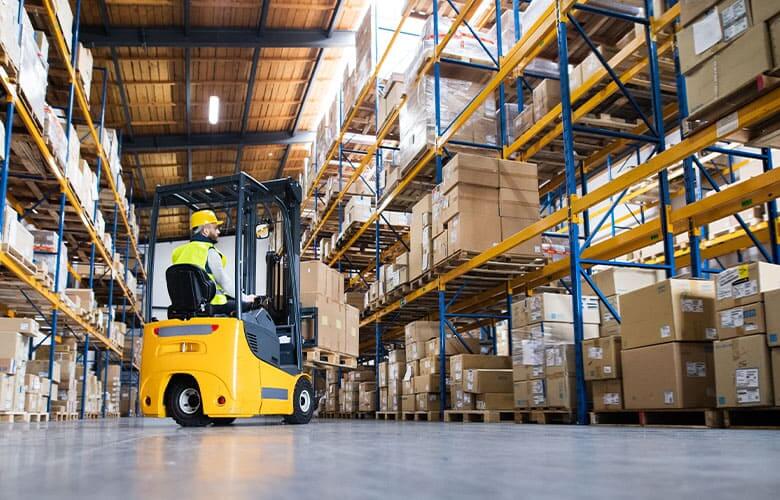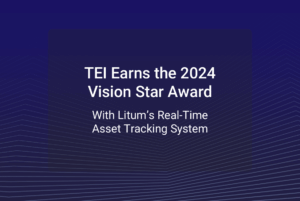Contents
According to Research and Markets, the global RTLS market is expected to grow as much as 22.5% by 2023. From an industry worth USD 3 billion in 2018, experts anticipate that the market for real-time location systems will grow to almost USD 9 billion by 2023. The healthcare industry has been one of the biggest users of RTLS technology, but industries such as mining and manufacturing are catching up.
Among the RTLS solutions available today, many are shifting to using either UWB or BLE. Some companies combine this with other technologies like passive or active RFID to improve the precision, cost, and effectiveness of the whole system.
But what do acronyms like UWB and BLE stand for? What are the differences between these technologies and how can they be applied to your business? What does Litum use in its RTLS solutions? Read on to learn the answers to these questions.
What is UWB?
UWB stands for Ultra-Wideband and is a short-range, wireless communication protocol. UWB operates at a very high frequency and uses a wide spectrum of several GHz. This makes it ideal for applications such as location tracking and data communication.
UWB is often compared to Bluetooth or Wi-Fi, but it differs substantially in that it can operate over a much wider range. For this reason, UWB is becoming an increasingly popular choice for many different applications, including the tracking of medical equipment in healthcare facilities and assessing patient flow, or putting location sensors in a warehouse to prevent theft.
UWB radio technology transmits information using very short pulses of high-frequency waves. Because UWB signals are so brief, they can occupy a much wider range of the electromagnetic spectrum than traditional wireless technologies like Bluetooth or Wi-Fi. This allows UWB devices to transmit data at very high rates – up to several gigabits per second – over relatively long distances (up to several hundred metres).
UWB technology is well suited for applications that require high bandwidth and/or low latency, such as streaming video or gaming. It can also be used for more accurate location tracking than other wireless technologies, making it ideal for applications like indoor navigation or asset tracking.
What is BLE?
Bluetooth Low Energy (BLE) is a wireless communication protocol designed for low power consumption. BLE was introduced as an alternative to the more power-hungry Bluetooth Classic protocol and offers many of the same features while using less power. BLE is often used in applications where battery life is a key concern, such as fitness trackers, heart rate monitors, and beacons.
BLE uses a technique called frequency-hopping spread spectrum, which rapidly changes the frequency of the signal to facilitate communication and make it more difficult for interference to disrupt communications. BLE devices “listen” for other BLE devices on 37 different frequencies, and each time they transmit, they hop to a new frequency. This process helps to reduce interference from other devices that might be using the same or similar frequencies.
BLE vs UWB - Tech Comparison
| Technology | BLE | Litum UWB |
| Location Tracking Options | Only ranging – presence detection per beacon only | Location, proximity, distance, ranging |
| Location Tracking Accuracy Max Capacity | Only presence level in a zone with 3-5 metres in optimum conditions | Highest accuracy up to sub 1 metre – in cm levels |
| Frequency | 2.4 GHz | 6.5 GHz |
| Air Traffic Volume in Frequency Channels | High | Medium – Low |
| Interference | Same frequency as Wi-Fi frequencies, high interference | No interference |
| Tag Density (# of tags in the same environment) | Limited ability due to lower frequency that is shared with Wi-Fi channels | High ability due to higher unutilized frequency channels |
| Range | Low range | High range |
| Location Algorithms | RSSI – Relative Signal Strength Indication, AoA | TWR, TDoA, AoA + ML |
| Signal Absorption | High absorption of radio signals by humans and distorts RSSI | High with RSSI, Not Applicable to ToF |
| Signal Reflection | High reflection in metallic environments | High reflection in metallic environments |
| Performance as tags density increase | Drops constantly due to lower frequency, absorption, and reflection of signals | Performance is great with Litum’s supporting AI algorithms in RTLS |
| Conclusion | Not recommended due to high tag quantities that are constantly in motion within confined and metallic environments | Only recommended option due to tag density, environment type, and accuracy requirements |
| Optimum conditions | Stationary assets (tags with accelerometers) in non-metallic environments to obtain room level location data such as medical supplies in hospitals | Tracking precisely a large number of entities that are constantly in motion in complex industrial environments full of metal |
| Optimum entity to track | Assets or vehicles | Assets, vehicles, or people |
| Set-up Effort | Easy | Medium |
Using UWB in Litum’s RFID RTLS

Active RFID is a type of RFID technology where the tags actively send out signals to be picked up by receivers. This is in contrast to passive RFID tags which only emit a signal when they are interrogated by a reader. Active RFID tags have their own power source, either a battery or capacitor, which allows them to continuously send out signals. This makes them more expensive than passive tags, but also gives them a longer range and faster response time.
Litum uses the active RFID technology and combines it with UWB for its real-time location system. But why UWB and not BLE? When it comes to BLE vs UWB, why is the latter better for RTLS technology? UWB has a few significant advantages over BLE when it comes to RTLS applications.
Greater accuracy
UWB offers much greater accuracy than BLE – on the order of centimetres, compared to BLE’s metre-level accuracy. This is critical for applications where location accuracy is required, such as in a healthcare facility or manufacturing environment. It can automatically identify the location of assets or people for accurate reporting.
Larger data transfers
UWB offers much higher data rates than BLE. This means that more real-time location data can be transmitted between the tag and the reader, allowing for more detailed tracking information. This is especially important in applications where real-time location services and asset tracking is necessary, such as in security or inventory management.
More cost-effective
UWB tags are typically more expensive than BLE tags. However, the increased accuracy and data rate of UWB tags make them a more cost-effective option in many RTLS applications. In the long run, the operational costs of using UWB can be lower than BLE. When compared to BLE, UWB is the clear choice for more demanding RTLS applications.
Better security
UWB is more secure than BLE. BLE is susceptible to attacks such as sniffing and replay attacks, while UWB is much more secure. This makes UWB the better choice for applications that require high-security levels.
Wider reach
UWB has a much longer range than BLE. BLE tags have a maximum range of around 50m, while UWB tags can have a range of up to 100m. This makes UWB ideal for large facilities that need to track the exact location of assets over a wide area.
There are many practical uses for RTLS technology. Some of the most common applications include:
- Tracking and monitoring assets in a warehouse or factory floor
- Tracking and managing patients and hospital equipment in a healthcare setting
- Tracking vehicles and cargo in transit
- Managing resources and personnel in an outdoor environment such as a construction site or oil field
- Controlling multiple access points to secure areas
Each of these applications requires a different set of features and capabilities from an RTLS system, so it’s important to understand the specific needs of the business or organisation before selecting a solution.
Conclusion
Litum offers the best RTLS solution for businesses in the manufacturing, construction, healthcare, aviation, and oil and gas industries. We can make your business more competitive by improving security, safety, and efficiency.
There are different RTLS technologies available today, so it may be difficult to determine which solution is best for your business. Contact us today so we can guide you on Litum RTLS solutions and what we can do to improve workflow and operations.




